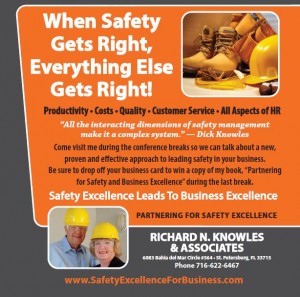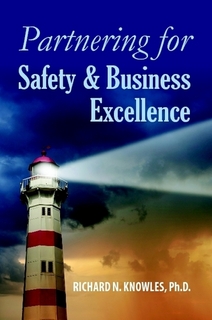Sustainable levels of safety excellence are achieved only when everyone is pulling together to make their work as safe and productive as possible.
 Partner-Centered Safety is a robust, proven way to bring people together to achieve sustainable levels of safety excellence being based on deeply held beliefs and values.
Partner-Centered Safety is a robust, proven way to bring people together to achieve sustainable levels of safety excellence being based on deeply held beliefs and values.
- People want to be treated as people.
- Most people have good minds and think.
- People want to know what is going on.
- People want to be successful and want to work safely.
- People love their kids and want to go home safely, everyday.
- People come together as partners to co-create their shared future in a structured, focused, intense, disciplined dialogue using the Process Enneagram©.
- People are self-organizing all the time openly and freely sharing information, building relationships of trust and interdependence through their agreements about how they are willing to work together and creating meaning.
- All the people at all the levels in the organization are in this together contributing from their unique roles and perspectives.
- People want to be heard, listened to, valued and respected.
A second element of Partner-Centered Safety relates to the environment in which everyone works that is complex in the sense that ideas, conditions, people, outside influences, etc. are interacting and changing all the time. Every decision is made in these complex situations yet no one has all the information, sees everything and has their mind totally focused on the specific task at hand. To over come these everyone needs help and support so that the best decisions are made in the moment of taking action.
A third element of Partner-Centered Safety is “The Bowl”. In co-creating their shared future and operating out of these shared beliefs and values a container is created consisting of their mission, vision, principles of behavior, standards of performance and expectations. This container is called “The Bowl”. The Bowl provides order for the organization, holding it together and within the Bowl the people have the freedom to make the best decisions possible. A major responsibility of the leaders and managers is to help everyone understand and maintain the Bowl through continuous conversations and interactions. If someone becomes a problem in not working this way or in violating the Bowl, management must address and deal with it. All the people have a responsibility to work within the Bowl holding each other accountable to live up to their shared agreements.
 I’ll be participating as a sponsor for the Conference Program Brochure. I’ll have an ad in the Brochure as well as a display table. My tag line is “When safety gets right, everything else gets right”. Since I am not an official speaker, I am going to use my display table as an opportunity to talk with people about the
I’ll be participating as a sponsor for the Conference Program Brochure. I’ll have an ad in the Brochure as well as a display table. My tag line is “When safety gets right, everything else gets right”. Since I am not an official speaker, I am going to use my display table as an opportunity to talk with people about the 




